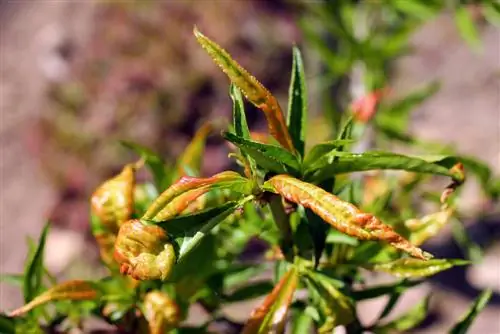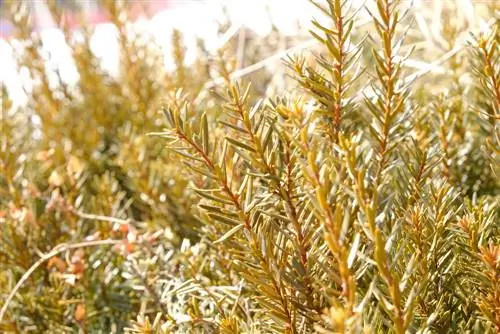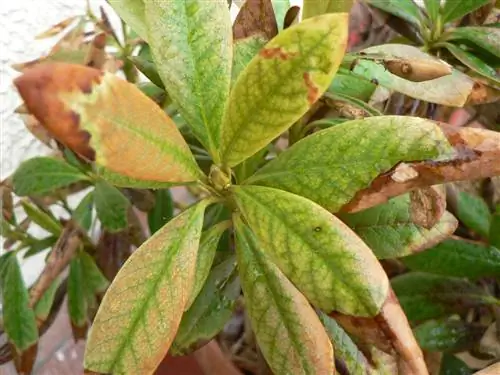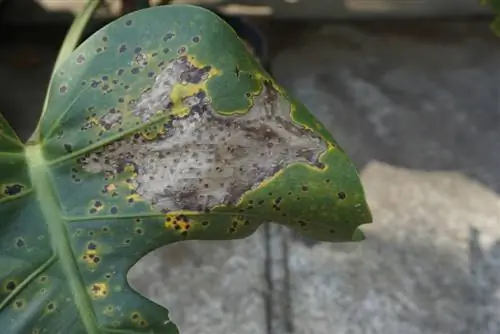- Author admin [email protected].
- Public 2023-12-16 16:46.
- Last modified 2025-06-01 06:02.
In addition to bacteria and viruses, tree diseases are often caused by fungi. There are very different species that attack the leaves, flowers, fruits, shoots or roots. Many types of fungus are comparatively harmless and can be eliminated with vigorous pruning. Others, however, have significantly more serious consequences.

How do you recognize and combat fungal infestation on trees?
To recognize a fungal infection on trees, look for brown or black leaf spots, rust-colored pustules, mealy coatings and drying shoots. To protect the trees, remove infected parts, keep the soil loose, avoid waterlogging and use biological pesticides.
Identify and combat fungal infestation
A fungal infection is not always easy to recognize; the signs often resemble other diseases or even a pest infestation and can easily be confused. However, these typical characteristics should make you suspicious and prompt you to examine them more closely:
- brown or black leaf spots
- rust-colored pustules or spots on the leaves
- floury leaf coatings
- suddenly drying shoots and branches
In all of these cases, you should first check the affected tree for possible pest infestation. If this can be ruled out, compare the damage with the exemplary damage images in a specialist book or on the Internet. In this way, the pathogen can usually be isolated quite well. For most fungal diseases, a vigorous pruning of all affected parts is sufficient, although removing too much of the leaves, for example, can result in the tree dying. That's why when the infestation is very severe, only pesticides often help.
Effectively prevent fungal infections
In any case, prevention is the most effective medicine. To ensure that fungal pathogens don't even have a chance, you should take these preventive measures to heart:
- Make sure there is sufficient distance when planting.
- Keep the treetops light.
- Remove dead wood as quickly as possible.
- Provide loose, well-drained soil.
- Avoid waterlogging.
- Fertilize properly - not too little and not too much!
- Use biological pesticides, such as field horsetail broth.
Always problematic: tree fungi
So-called xylobionts are wood-decaying tree fungi that can mostly attack dead trees, but also weakened living specimens. Honey mushroom, common sulfur mushroom or birch mushroom, oyster mushroom or tinder mushroom initially develop in secret for years - their fruiting bodies only appear when the mycelium has already penetrated the wood. There is no saving a tree like this - you can only cut it down. However, you can wait a little longer for this, because fruit trees in particular often bear fruit for a long time and only gradually die.
Tip
Lichens are a symbiotic community made up of certain bacteria and algae. These just sit on the tree, but do not tap into it. Therefore, they damage the plant, but are often an indicator of weakened specimens.






